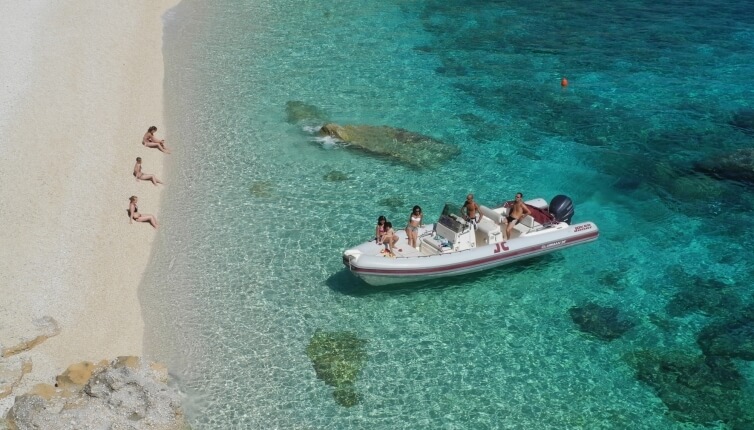Excursions in Barbagia
Minimum 8 persons.
- 8:30 Depart from Cala Gonone
- Arrive at Nuoro after 1 hour, visit the Costume Museum, proceed to Mount Ortobene, visit the statue of “Su Redentore”.
- Departure to Orgosolo and visiting its Murals.
- Typical lunch with the shepherds; dancing and singing
- Return at about 17:00.
Mount Ortobene
Mount Ortobene (in Sardinian: Orthobène) is an ancient granite hill, which rises in the east of the town of Nuoro.
It stands at 955 metres above sea level. At the summit you can admire the great Redeemer Statue, a bronze work by sculptor Vincenzo Jerace, which was raised atop the mountain’s summit in 1901 when celebrating Jubilee.
Ortobene is a mountain in Nuoro visited for picnics and walks or outdoor games.
Of special interest to tourists is the so-called "sa conca" or "il fungo" (the mushroom), located on the side of the road leading to the Sedda Ortai park; it is a fold formed out of an enormous rock, unique in Sardinia.
Coming down from the Redeemer park on the opposite side of the town, you will have a wonderful view over the valley and the Oliena mountains, and on clear days you can see the sea of Baronia in the distance.
At the foot of the rock formation on which the statue is located, there is a plaque dedicated to Luisa Jerace, wife of the sculptor.
Legend tells that she died upon seeing the statue, overwhelmed by its size.
The Murals of Orgosolo
The first mural in Orgosolo was made in 1969 by a group of anarchists from Milan, which is signed "Dionysus", they were the years of youth protest.
In 1975, Francesco Del Casino and his pupils at the Orgosolo secondary school made other murals, his painting style characterized the murals with complaints of unjust confinement, prison conditions, the suffering of prisoners and family, the life of a fugitive and a series of politically motivated paintings.
The features, modes of expression and the combination of objects represented often resemble Picasso’s Guernica and the Cubist style in general; the lines of some portraits bring to mind the paintings of Léger.
Sometimes it seems to be reunited with the codes of expression of the Mexican muralists of the ’20s.
The colours are bright, the shapes solid and square, the cubist influence is evident: female figures with large hips and men with asymmetrical, gnarled and hypertrophic faces and hands.
Overall, the murals express a simple language, and when image is not enough to communicate, the muralist uses caption, literary or political citation and memorable phrases, that stick in the mind.
The style is consistent with the message that the murals intended to convey.
Currently, there are over 150 murals that are now an integral part of the image of the country.





